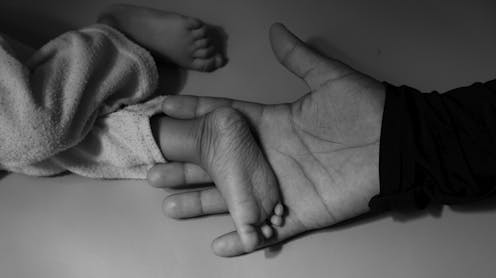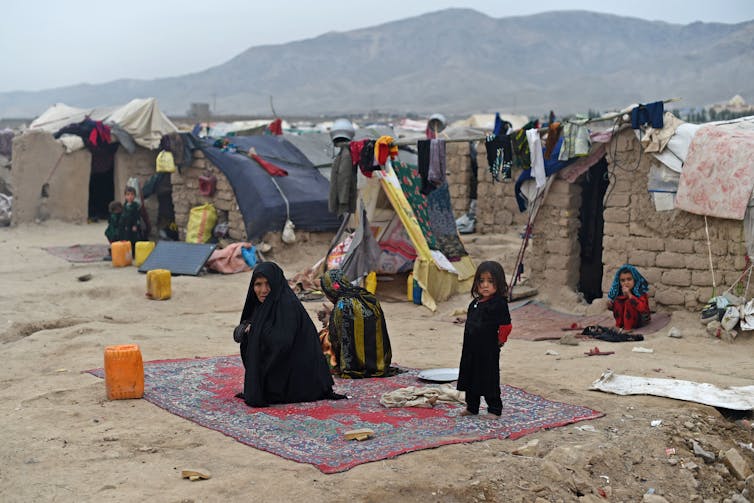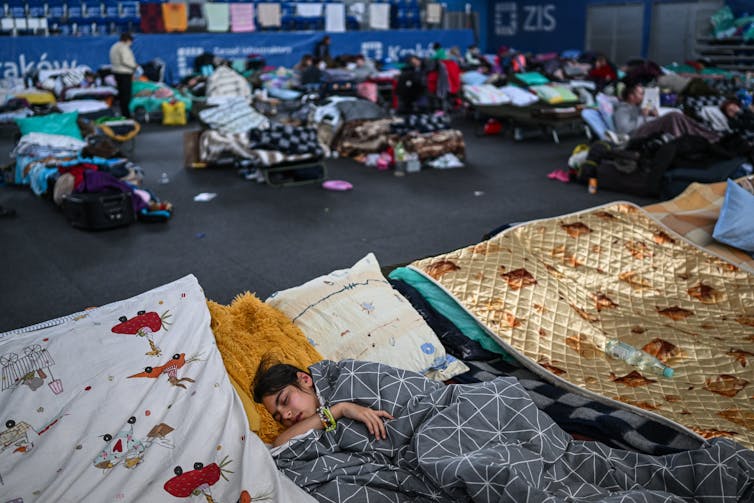Ukraine is benefiting from generous donations – and many other global causes need help, too
Far more people are dying of hunger around the world than in Europe’s new war.

Ukraine’s resistance to Russia has captivated the world, dominating social media and the news since the Feb. 24, 2022, invasion. With this attention has come a massive outpouring of financial support.
Ordinary people, governments, corporations and celebrities have pledged billions to support Ukraine and have dispatched everything from missiles to cryptocurrency. Stories of sacrifice inspire courage, and photos of vulnerable victims, such as the pregnant woman on a stretcher after a bombing, have ignited rage and pain. When reports surfaced that the woman and her baby had both died, the collective sorrow only deepened.
The urge to express solidarity by making your own donation is only natural.
But there are many other tragedies today. Having researched food insecurity around the world, I believe that the Ukraine crisis evokes a basic question about giving globally: What’s the best way to choose a foreign cause?
Other tragedies abound
To be sure, quantifying the pain of loss is impossible. Yet the waves of generosity toward Ukraine do offer an opportunity to examine what drives charitable giving.
While Ukraine’s situation is tragic, so are conditions in countries where wars have ground on for years, such as in Yemen, Afghanistan and Ethiopia. And the economic and social disruption caused by the coronavirus pandemic put tens of millions of people at risk of falling into extreme poverty.
The conflict in Yemen alone, now entering its seventh year, has caused the deaths of more than 377,000 people, yet this global humanitarian crisis has garnered little U.S. media coverage. And a severe famine there is affecting up to 19 million people.

It’s hard to draw comparisons
People want to make a difference, but they do not necessarily give to causes that could have the biggest impact. In fact, donors rarely can explain what makes them choose a cause.
Research indicates that numbers are often less compelling than powerful stories. Studies have found that people tend to be more likely to respond to pleas to help a single, identifiable beneficiary rather than a large-scale problem, such as hunger afflicting a whole country.
When media coverage of one issue rises, the more narratives and stories about that subject you will see and hear. People often end up donating to what is on their minds, as opposed to what might, in fact, represent the greatest need.

Who is welcomed?
Likewise, many accounts of the plight of the more than 3 million Ukrainian refugees are harrowing. Yet so far, the evidence suggests that depending on what refugees look like and where they are from, the degree to which they are welcomed and supported by governments and the public as a whole will differ.
The Ukrainians fanning across Europe are being welcomed warmly and virtually without questions. In the United Kingdom, the government is offering residents 350 pounds a month to house them.
And yet in those same places, refugees from the Middle East and Africa have rarely experienced such generosity.
Ukrainians “are intelligent, they are educated people,” Bulgarian Prime Minister Kiril Petkov told journalists in early March. “This is not the refugee wave we have been used to, people we were not sure about their identity, people with unclear pasts, who could have been even terrorists.”
Several news outlets such as CBS News and Al Jazeera English have issued apologies after their correspondents made insensitive comments implying that Ukrainian refugees were more civilized or acceptable than those fleeing other homelands.
This dichotomy begs questions: Which lives are seen as most valuable? And are people of color valued as much as white people?

Giving to prevent war
One compelling reason to consider donating to reduce food insecurity in low-income countries is that it can lower the chances that a conflict will occur.
Food insecurity perpetuates conflict by driving people away from their homes, land and jobs – while fueling grievances. Working to eradicate hunger can reduce a source of conflict.
Educating women and girls can assist in the prevention of violent conflict and violent extremism. Societies with more gender equality, with higher female representation in government and in educational attainment, are associated with lower levels of intrastate armed conflict.
Additionally, inequality in general can stoke discontent and even lead to violent conflict. Underscoring all of this is the climate crisis, which if not proactively addressed will increase resource scarcity, hunger and inequity – and those developments, in turn, will increase the chances of violent conflict.
[Over 150,000 readers rely on The Conversation’s newsletters to understand the world. Sign up today.]
As long as donations support reputable causes, where the funds will be used for their intended purpose, I believe all giving is good.
There will always be competing causes, and limited resources to address every injustice. Yet it is worth considering how to strike a balance between immediate and long-term giving goals based on personal values and priorities.
Jessica Eise does not work for, consult, own shares in or receive funding from any company or organization that would benefit from this article, and has disclosed no relevant affiliations beyond their academic appointment.
Read These Next
The Bible says little about Jesus’ childhood – but that didn’t stop medieval Christians from enjoyin
Legends about Jesus’ early years that circulated in medieval Europe often drew on apocryphal texts.
Whether Netflix or Paramount buys Warner Bros., entertainment oligopolies are back – bigger and mor
Hollywood has seen this movie before.
Donor-advised funds have more money than ever – and direct more of it to politically active charitie
When foundations make grants to DAFs, the digital trail normally created instead becomes a dead end.






